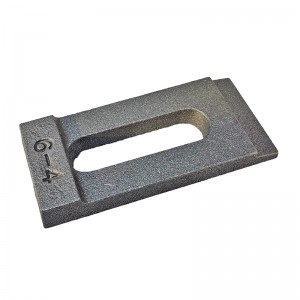Nov . 07, 2024 13:26 Back to list
Heat Exchanger Manufacturer Specializing in Cast Silicon Aluminum Alloys and Custom Solutions
The Role of Cast Silicon Aluminum Alloy Heat Exchangers in Modern Manufacturing
In the rapidly evolving world of manufacturing, efficiency and reliability in heat transfer systems are significantly important. One of the materials that have emerged as a frontrunner in the production of heat exchangers is cast silicon aluminum alloy. This article delves into the characteristics, advantages, and applications of cast silicon aluminum alloy heat exchangers, and highlights some leading manufacturers in this specialized field.
Understanding Cast Silicon Aluminum Alloys
Cast silicon aluminum alloys are a blend of silicon, aluminum, and often small amounts of other elements such as copper, magnesium, or zinc. These alloys are known for their excellent mechanical properties, corrosion resistance, and good castability. The incorporation of silicon allows for a lower melting point, making it easier to work with during the casting process. Moreover, the resulting material demonstrates improved thermal conductivity and lower thermal expansion, which are crucial in heat exchanger applications.
Advantages of Cast Silicon Aluminum Alloy Heat Exchangers
1. Thermal Performance The primary function of a heat exchanger is to transfer heat efficiently. Cast silicon aluminum alloys are excellent conductors of heat. Their thermal conductivity often surpasses that of traditional materials, resulting in lower energy costs and improved process efficiency.
2. Corrosion Resistance One of the biggest threats to heat exchangers is corrosion, which can significantly shorten their lifespan. The silicon content in these alloys provides inherent corrosion resistance, especially in harsh environments typically found in industries like petrochemical, marine, and power generation.
3. Durability and Strength Cast silicon aluminum alloys exhibit excellent mechanical properties, including high strength-to-weight ratios. This characteristic allows manufacturers to design more compact and lighter heat exchangers without compromising structural integrity.
4. Cost-Effectiveness While the initial investment in cast silicon aluminum alloy heat exchangers may be higher than that of other materials, their longevity and low maintenance costs present a compelling long-term value. The durability of these heat exchangers results in fewer replacements and reduced downtime for production processes.
Applications in Various Industries
cast silicon aluminum alloy heat exchanger manufacturer

Cast silicon aluminum alloy heat exchangers find applications across a wide range of industries
. Their robust properties make them ideal for- Automotive Industry In automotive applications, these heat exchangers are used in radiators, intercoolers, and oil coolers. Their lightweight and high thermal efficiency contribute to improved performance and fuel efficiency in vehicles.
- Aerospace In the aerospace sector, weight reduction is crucial. Cast silicon aluminum alloys provide lightweight solutions that do not sacrifice performance, making them suitable for heat exchangers used in engine cooling systems.
- HVAC Systems Heating, ventilation, and air conditioning (HVAC) systems benefit from the use of these alloys due to their efficiency in heat transfer and resistance to corrosion in humid environments.
- Industrial Manufacturing Many manufacturing processes generate excess heat that must be managed efficiently. Cast silicon aluminum alloy heat exchangers can be found in various industrial applications, including chemical processing and oil refining.
Leading Manufacturers in the Market
The market for cast silicon aluminum alloy heat exchangers has seen the emergence of several manufacturers specializing in high-quality production. Companies like Alfa Laval, API Heat Transfer, and HRS Heat Exchangers are prominent players that leverage advanced casting techniques and innovative designs to produce efficient heat exchangers tailored to specific industrial needs.
These manufacturers employ cutting-edge technology and focus on research and development, ensuring that their products meet the evolving demands of various industries. Their commitment to quality and performance has solidified their reputation as leaders in heat exchanger manufacturing.
Conclusion
As industries continue to seek materials that offer superior performance and longevity, cast silicon aluminum alloy heat exchangers stand out as an excellent choice. With their ability to efficiently transfer heat while resisting corrosion, these heat exchangers are pivotal in enhancing productivity and reducing costs across numerous sectors. As technology advances and more manufacturers adopt these materials, the future looks promising for cast silicon aluminum alloy in the manufacturing of heat exchangers.
-
Centrifugally Cast Iron Water Main Pipe | Ductile Iron Solutions
NewsAug.24,2025
-
Durable Cast Steel Concrete Pipe Mold Bottom Rings & Base Trays
NewsAug.23,2025
-
Centrifugally Cast Iron Water Main Pipe for Reliable Mains
NewsAug.22,2025
-
Durable Centrifugally Cast Iron Water Main Pipe
NewsAug.11,2025
-
Centrifugally Cast Iron Water Main Pipes for Reliability
NewsAug.10,2025
-
High-Quality Centrifugally Cast Iron Water Main Pipes
NewsAug.09,2025


